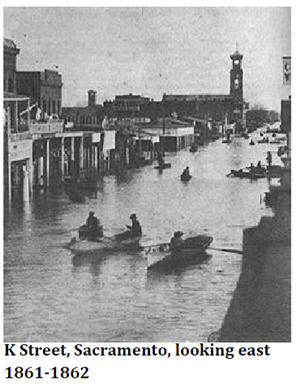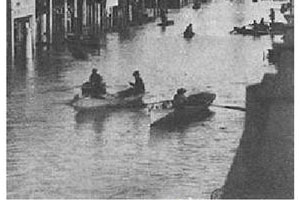 Severe flooding in Sacramento during 1861-1862 storms.
Severe flooding in Sacramento during 1861-1862 storms.
Earth's 4.5 billion year history is riddled with the evidence of landscape-altering events that would be considered rare and catastrophic from a human perspective. Some of the 'normal' events that shape the Earth's surface occur at intervals longer than the lifespan of a human. For example, let's say that an abrupt event (an earthquake, flood, or tsunami) occurs, on average, once every 500 years. Such an event would have occurred more than 5,000 times since our species has walked the Earth.
We have our grandparents and great-grandparents (and written/photographed history for that matter) to remind of us events that did happen. But there's nothing quite like direct experience. The stories of natural disasters that occurred many generations ago seem far away and detached from our current world.
How do we deal with this? One tool to remind ourselves of what is possible when it comes to 'rare' natural events is science. Under the right circumstances and analyzed with the proper tools the geologic record holds clues to how often such events might occur (frequency) and how significant there effects might have been (magnitude). Combining this type of work with sophisticated modeling of the processes at work can provide insight into what to expect.

